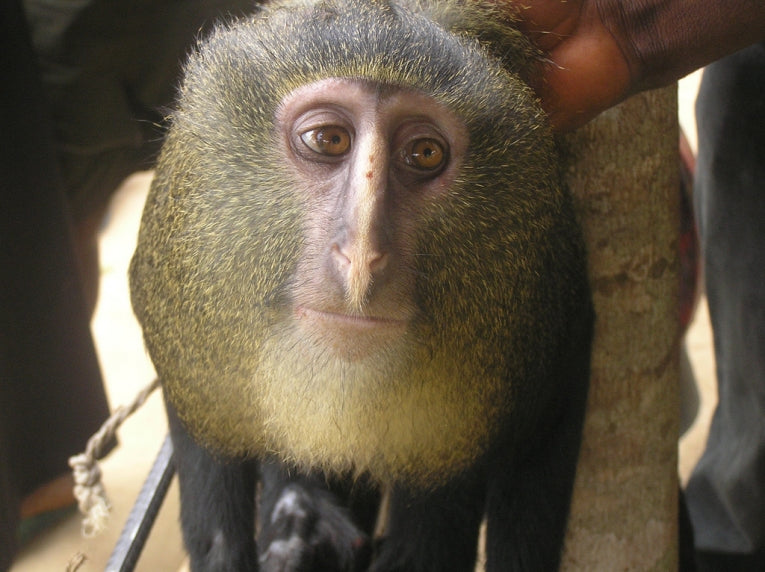Since 2007, the "lesula" has been waiting to be confirmed as one of the last primates ever to be discovered. There will be more, to be sure, as this lowland species from central Congo's inter-fluvial region has defined the area as having several endemic monkey varieties alone. Specifically, the Lomami Red Colobus, the Lomami Blue Monkey and the Kasuku River Wolf's monkey are already identified as endemic to this region of forest.
With two rivers separating it from its closest relative, the geographical isolation has caused a distinct speciation from the blacker, hairy relative across the waters. The Lomami river has also given this newly described species its Latin name, Cercopithecus lomamiensis. The waters isolated the whole forest area from scientists too and they now now want to find a third new African monkey (in 28 years).
It was six months after the first find,that wild specimens were finally seen, with that fine blond mane and pale naked face with a cream-striped nose:
Like some other primates, the species can be distinguished by its dawn chorus of descending "booms", probably a male choir, using that sex's specialised air sac.
The trees of the forest are dominated by Gilbertodendron dewevrei, and where regenerated woodland occurred, the shy lesula rarely sang. However the voice in the morning proved that the animal is more common than the few sightings suggested, and it is in captivity where it was spotted, in a primary school. Areas with lower rainfall in the south and the closed northern evergreen forests around the Tutu river provided no signs of the species. They mixed with other primates readily but very conspicuously avoided the naked ape(namely 'us' - for those unfamiliar with Desmond Morris' book!)

Lesula (Cercopithecus lomamiensis); Credit: © Terese B. Hart et al
The place in the food web was fairly well plotted for this rare and shy creature. A crowned eagle was observed killing but failing to eat one specimen, while the association with other monkeys could work out in the lesula's favour as they were observed eating fruit flowers ;leaves and meristems that had dropped from the trees, where other species were feeding. Over 17000km2, the species is not scarce, it seems, but naturally it is limited to this area and must be regarded as vulnerable by IUCN standards. Bushmeat hunting has wiped out chimpanzee, gorilla and many monkey populations and this new species would be unlikely to be the exception.
John A. Hart et al from the Lukuru wildlife sanctuary at Gombe in the Democratic Republic of Congo is responsible for the paper in PLoS ONE. The Republic of Congo and various US universities are also heavily involved in the intricate process of identifying how the new species compares to its relatives.










